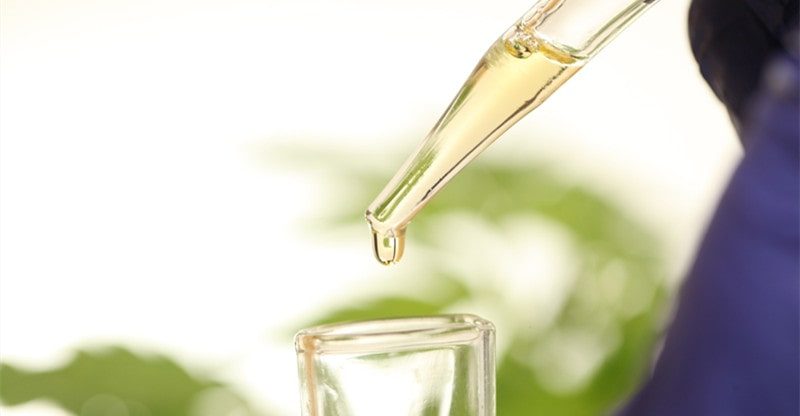How Is CBD Oil Made?
Most of us know that CBD stands for cannabidiol, one of the many chemical compounds found in marijuana or hemp – but then we sort of stop there. If we’re purchasing CBD oil, whether for ourselves or a pet, we might go an extra step to question the quality and ingredient concentration. But have you ever wondered how it’s made and extracted?
For starters, CBD occurs in the cannabis plant, either from hemp or marijuana. Though it’s worth noting that most CBD products on the market are derived from the hemp plant and contain less than 0.3% of THC in dry weight. Whereas CBD from the marijuana plant will have high concentrations of THC, the psychoactive compound that leaves a “high” effect.
CBD oil derived from hemp has proved effective in a number of health ailments that dogs and humans face. Rather than producing a high, it purportedly relieves pain and side effects related to arthritis, cancer, anxiety and epilepsy.
Basically, working through the endocannabinoid system-which both dogs and humans have-CBD can help to improve your dog’s health and well-being with the right dosage. Here is a helpful guide to find out more of the ailments CBD oil can treat in dogs.
But before getting to that point or even before it ends up in a shiny little tincture bottle ready for use, it has to go through certain processes.
In order to be consumed orally or topically, the cannabidiol compounds first need to be extracted into an oil.
Why do we need to extract CBD?
Think about it – we can’t just chew on raw cannabis, this wouldn’t produce the same results and it wouldn’t be particularly palatable. We need to extract CBD to separate the cannabinoid compounds from the plant in order to create a concentrated solution that humans can ingest.
To include it in liquid, oil or edible form, CBD needs to be extracted through a process called decarboxylation, which helps to activate the compounds in cannabis, thereby maximizing the effects once it’s digested into a body.
Below we take you through the methods of extractions used to create CBD oil from hemp. Continue reading to learn more about this medicinal product, how it comes to fruition, and what type of extraction is preferred.
The 3 Main Methods of Extracting CBD Oil
It all starts from the cannabis hemp plant. After it’s harvested and dried, the CBD-rich vegetation is ground up in preparation for oil extraction. The general idea of hemp extraction is that a solvent is passed through plant material in order to separate out the active compounds in the bulk plant materials.
The resulting cannabinoids, terpenes and other compounds are collected as oil and then processed more before making their way into the final product.
There are many ways to extract oil from a hemp plant; each method has its own merits and limits. Nonetheless, if the final product comes with a certificate of analysis, the CBD oil is good regardless of its extraction method.
1. CO2 Extraction
Benefits: no chemical residues, ideal solvent for temperature-sensitive materials
This is one of the more popular, yet more expensive extraction methods. Due to removing the most desirable cannabinoid compounds from a plant as possible, it creates a clean oil that’s free of toxins. Most companies use this method because it translates into high-quality, pure CBD oil while simultaneously minimizing the chance of dangerous residues.
Within temperature-controlled chambers, CO2 extraction pumps and filters pressurized carbon dioxide in extremely low temperatures to isolate and preserve the CBD oil. In this phase, CO2 acts like a gas and then turns into an amber-colored liquid before chemists will eliminate any plant residue.
CO2 extractions is definitely a preferred method. Besides, CO2 is a common additive to food and drinks such as carbonated soft drinks and decaffeinated coffee. But it’s most safe and effective when done by professionals due to the technicality of the process.
2. Liquid Solvent Extraction
Benefits: has a higher yield of CBD oil when using high-grade alcohol
Some say CO2 extraction alters the pressure and temperature so much that the final yield no longer fits its natural chemical profile. To get the entourage effect (when all compounds from the cannabis plant are synergized together) of full-spectrum CBD oil, liquid solvents such as ethanol can be used to extract CBD oil from hemp.
This method uses an alcohol solvent, typically ethanol, but butane can also be used to absorb the oils and flavours of the cannabis plant. However, the only safe solvent that should be allowed here is ethanol as it easily evaporates. Other solvents like butane and hexane are likely toxic and should be avoided.
Essentially, the solvent will be added to the hemp biomass and will strip away the cannabinoids, flavors, terpenes and natural phytochemicals from the plant; otherwise known as decarboxylation. Afterward, it will be heated in order to evaporate it down to an oil.
Liquid solvent extraction methods are more dangerous because butane and ethanol are extremely flammable. As such, this should only be done by professionals.
3. Olive Oil Extraction
Benefits: safe and inexpensive
Olive oil extraction is a popular homemade method because it’s easy enough to perform in your own kitchen if you’re feeling experimental. You first need raw hemp plant material, either grinded or decarboxylated. This means grinding the plant bud in powder or putting it in the oven on a baking sheet at 250 degrees Fahrenheit for 60 minutes respectively.
Once this is done, combine half olive oil and half water into a saucepan, add the prepared CBD cannabis buds and stir until it hits a 200 degree Fahrenheit boil. Then you can let it simmer and cool to room temperature.
The main thing to understand with olive oil extraction is that it’s not ideal to scale up (hence why not many companies use this method) and it’s perishable; it needs to be stored afterwards in a cool, dark place.
Then, what happens after extraction?
Did you think that was it?? Well…not just yet. After the CBD oil is extracted, it has to be refined through a process called Winterization. This process is critical for producing premium CBD oil.
By further refining the extract down, you’re eliminating unwanted solvents, chlorophyll, waxes and most importantly, lipids (or fats). Because fats dilute the cannabinoid concentration, it’s important to rid them to maintain as much purity as possible in the final product.
Choosing the Best Extraction Method: Does it Matter?
As we mentioned earlier, every method differs when it comes to cost, efficiency and operation. No method will perform at 100% in every area; there are pros and cons to all of them. But when it comes to quality and best extraction method – that depends on your preferences (ie. full-spectrum, safety, entourage effect, etc.).
It’s challenging to provide a straight answer, but as long as you have a certificate of analysis, you can better assess the various components and amounts. Ultimately, you’ll want a CBD oil that is free of pesticides, chemical fertilizers, and artificial flavors.



